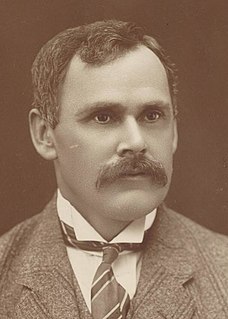Related Research Articles

Canterbury is an electoral district of the Legislative Assembly in the Australian state of New South Wales, currently represented by Sophie Cotsis of the Labor Party.
St George was an electoral district of the Legislative Assembly in the Australian state of New South Wales, named after the St George district. It was originally created in 1894, when multi-member districts were abolished, and the four member Canterbury was largely divided between Ashfield, Burwood, Canterbury, Petersham and St George. In 1920, with the introduction of proportional representation, St George was expanded to a five member district, absorbing the electoral districts of Canterbury and Hurstville. Proportional representation was abolished in 1927, and St George was divided into the single member electorates of St George, Canterbury, Hurstville, Oatley and Rockdale. St George was abolished in 1930, being partly replaced by Arncliffe.

George Cann was an Australian politician who served in both the Parliament of Australia and the Parliament of New South Wales. At state level he served as a minister in the governments of Jack Lang during the 1920s. He was a miner before entering politics.
Members of the New South Wales Legislative Assembly who served in the third parliament of New South Wales held their seats from 1859 to 1860.</ref> The Speaker was Sir Daniel Cooper until 31 January 1860 and then Terence Murray.

John Lucas was a builder and politician in colonial New South Wales, a member of both the Legislative Assembly and Legislative Council.
Members of the New South Wales Legislative Assembly who served in the sixth parliament of New South Wales held their seats from 1869 to 1872.</ref> The 1869–70 election was held between 3 December 1869 and 10 January 1870 with parliament first meeting on 27 January 1870. There were 72 members elected for 52 single member electorates, 6 two member electorates and 2 four member electorates. Due to a change in the Constitution of New South Wales the maximum term of this parliament was reduced from 5 years to 3. However the assembly was dissolved after only 25 months after the third government of Sir James Martin lost a vote of supply. The Speaker was William Arnold.
Members of the New South Wales Legislative Assembly who served in the 11th parliament of New South Wales held their seats from 1882 to 1885.</ref> Elections for the eleventh Legislative Assembly were held between 30 November and 21 December 1882 with parliament first meeting on 3 January 1883. The Assembly was expanded to 113 members elected in 40 single member electorates, 26 two member electorates, 3 three member electorate and 3 four member electorates. The parliament had a maximum term of 3 years and was dissolved on 7 October 1885 after 33 months. The Premiers during this parliament were Sir Alexander Stuart until 7 October 1885 and then George Dibbs. The Speaker was Edmund Barton.
Alexandria, an electoral district of the Legislative Assembly in the Australian state of New South Wales, had two incarnations, the first from 1904 to 1920, the second from 1927 to 1930.
Port Stephens, an electoral district of the Legislative Assembly in the Australian state of New South Wales, was established in 1988.
Canterbury, an electoral district of the Legislative Assembly in the Australian state of New South Wales has had two incarnations, from 1859 to 1920 and 1927 to the present.
Newtown, an electoral district of the Legislative Assembly in the Australian state of New South Wales, was established in 1859.
Members of the New South Wales Legislative Assembly who served in the 56th Parliament held their seats from 2015 to 2019. They were as elected at the 2015 state election and at by-elections. The Speaker was Shelley Hancock.</ref>
John Wheeler was an Australian politician who was a member of the New South Wales Legislative Assembly between 1889 and 1891.
Montagu Consett Stephen was an Australian politician.
Cumberland South Riding, an electoral district of the Legislative Assembly in the Australian state of New South Wales was created in 1856 and abolished in 1859.
A by-election for the seat of Canterbury in the New South Wales Legislative Assembly was held on 10 October 1914. The by-election was triggered by the bankruptcy of Henry Peters (Labor).
A by-election for the seat of Canterbury in the New South Wales Legislative Assembly was held on 16 September 1885 because Henry Moses was appointed to the Legislative Council.
A by-election for the seat of Canterbury in the New South Wales Legislative Assembly was held on 19 April 1884 because of the resignation of William Pigott.
A by-election for the seat of Canterbury in the New South Wales Legislative Assembly was held in September 1868 because of the resignation of James Pemell.
A by-election for the seat of Canterbury in the New South Wales Legislative Assembly was held on 24 February 1865 because of the resignation of John Lucas, who had been elected to both Canterbury, and Hartley.
References
- ↑ "Mr Montagu Consett Stephen (1827-1872)". Former Members of the Parliament of New South Wales . Retrieved 16 June 2019.
- 1 2 Green, Antony. "1871 Canterbury by-election". New South Wales Election Results 1856-2007. Parliament of New South Wales . Retrieved 30 September 2019.
- ↑ "Writ of election: Canterbury". New South Wales Government Gazette (307). New South Wales, Australia. 15 December 1870. p. 2785. Retrieved 30 September 2019– via Trove.